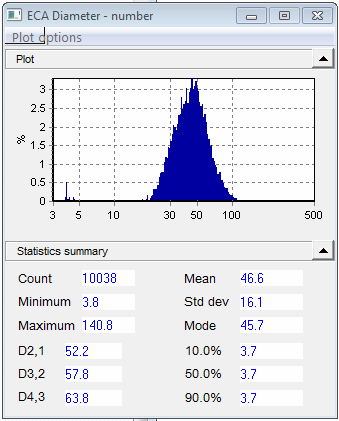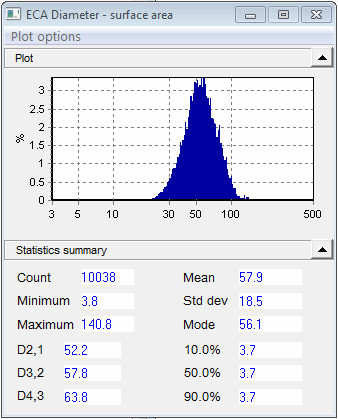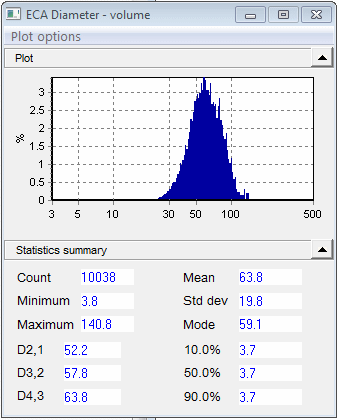Surface area and volume weighting
Sometimes you need to know how particles are distributed along the size axis with respect to surface area or volume. For example you might need
to know how much of the sample volume is between two specific particle diameters. The Particle Insight computes surface area and volume for each
particle. The calculation is done separately for each shape model. For the circle model, we use a determined diameter, such as ECAD, and weight the
distribution by the cube of that diameter, to get the volume-weighted ECAD distribution. The calculation is therefore assuming a nominally spherical
shape for all particles, in the circle model.
The Ellipse model forms the 3-dimensional ellipsoid out of the planar ellipse, using the Length value as the major axis of the 3-D ellipsoid.
In the Rectangle and Fiber models, the software takes the 2-dimensional width as the width in the third dimension. These prcedures rest on the
principle that long particles align themselves with the direction of flow, and that therefore the camera always sees the actual length, and the
size in the 3rd dimension is comparable to the observed width.
Unlike other particle sizing methods, imaging has the advantage that it can compute surface areas and volumes particle by particle, rather than
inferring the area and volume distributions from the number distribution. This results in more accurate area and volume weightings.
The graphs below show the same size distribution with surface area and volume weighting. The area distribution is shifted more toward the high end
than the number distribution, and the volume one is shifted even further to the right. As expected all statistics values increase accordingly.
 Number distribution |
 Surface area weighting |
 Volume weighting |
